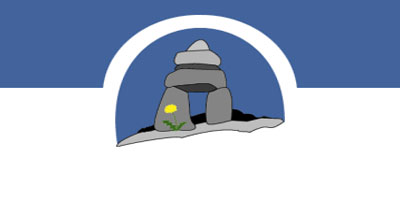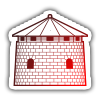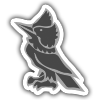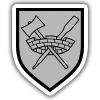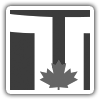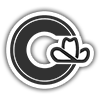Nunavut, Canada
Flag
The flag of Nunavut, granted by the Right Honourable Roméo LeBlanc, Governor General, on April 1, 1999, features the colours white, blue and gold, which symbolize the riches of the land, sea and sky. Red is a reference to Canada. The inuksuk and the Niqirtsituk star are also found on the coat of arms.
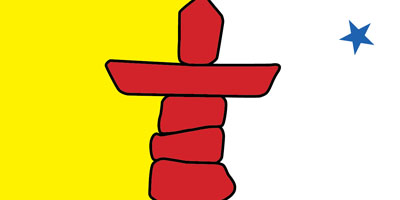
Other Provincial Symbols
- Floral Emblem: Purple Saxifrage
- Bird: Rock Ptarmigan
- Animal: Canadian Inuit Dog
Coat of Arms
The Nunavut coat of arms was granted by the Right Honourable Roméo LeBlanc, Governor General, on April 1, 1999. The colours blue and gold symbolize the riches of the land, sea and sky. In the base of the shield, the inuksuk symbolizes the stone monuments that guide the people on the land and mark sacred and other special places. The qulliq, or Inuit stone lamp, represents the light and warmth of family and community.
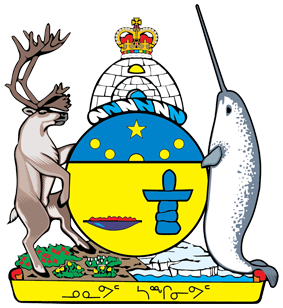
Above, the concave arc of five gold circles refers to the life-giving properties of the sun, which arches above and below the horizon depending on the season. The star is the Niqirtsituk, the North Star, the traditional guide for navigation. More broadly, the star represents the unchanging nature of the leadership of elders in the community.
In the crest, the igloo represents the traditional life of the people and the means of survival. It also symbolizes the assembled members of the legislature meeting together for the good of Nunavut. The Royal Crown symbolizes government by and for all the people of Nunavut and the equivalent status of Nunavut with other territories and provinces in Canadian Confederation.
The tuktu (caribou) and qilalugaq tugaalik (narwhal) refer to land and sea animals that are part of the rich natural heritage of Nunavut and provide sustenance for its people. The compartment at the base is composed of land and sea and features three important species of Arctic wild flowers.

Origin of the Name
Nunavut means "our land" in the Inuit language of Inuktitut.

History
The earliest traces of settlement in Canada's Arctic date back some 4,000 years, when the first of a number of hunting societies travelled across the Bering Strait into Northern Canada. The Inuit, who make up 85 percent of Nunavut's population, are descended from one of these societies, the Thule, whose presence dates back at least 1,000 years.
The first European contact with the Inuit came with the arrival of the Norsemen in the 11th century. They were followed by explorers in search of the Northwest Passage - first in Elizabethan times and, again, in the 19th century. Later came whalers, Hudson's Bay Company traders, missionaries and the Royal Canadian Mounted Police.
The idea of dividing the Northwest Territories in two was first raised during the government of John Diefenbaker in the early 1960s. The government went as far as introducing a bill in the House of Commons to divide the Northwest Territories. The bill was allowed to die on the order paper after some residents of the Eastern Arctic flew to Ottawa and told a House of Commons Committee that the people of the North had not been consulted on the matter.
The Government appointed a three-man commission to examine political development in the Canadian Arctic and to make recommendations to Parliament. The Carrothers Commission held some hearings in the north and recommended that the issue of dividing the Northwest Territories be further examined in 10 years' time.
In 1971, the leadership of the newly created Inuit Tapirisat of Canada stated its objective of creating a new territory for the Inuit in the Eastern Arctic. They insisted that it had to be part of any final land claims agreement, in spite of objections from both the Northwest Territories government in Yellowknife and the federal government. They were successful in persuading the Northwest Territories Legislative Assembly to put the issue to public debate.
The first major test for Nunavut came in the plebiscite of 1982 in which all residents of the Northwest Territories were asked to vote on the issue of division. Proponents of division won the plebiscite 53 percent to 47 percent. Ten years of negotiations on a boundary for the new territory were followed by another plebiscite in 1992 to ratify the boundary. The Government of Canada then agreed to include the creation of Nunavut as part of the final land claims agreement that recognized Inuit ownership of 350,000 square kilometres of land. The Nunavut Act was passed by Parliament in 1993 and came into effect on April 1, 1999.
Nunavut accounts for roughly 20 percent of Canada's land mass, making it the country's largest political subdivision. The territory is governed by a 19 member legislative assembly that operates consensus style without political parties. Nunavut's largest employer is the government. Other important economic sectors include mining, construction, tourism and traditional activities such as hunting, trapping, fishing and arts and crafts.
Franco-Nunavois Flag
